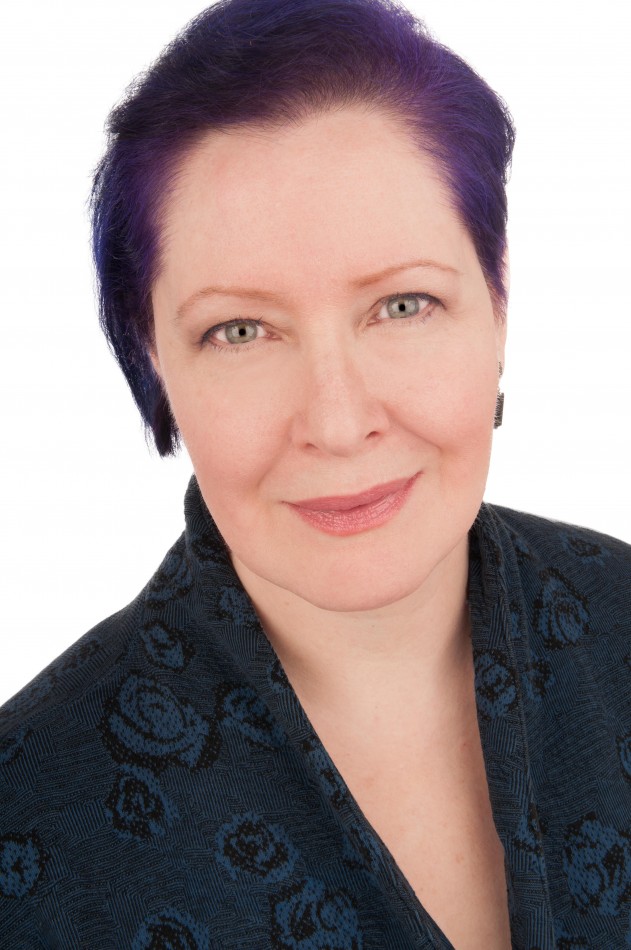You’ve picked up and learned many cry-on-cue acting tricks. But they rarely worked! You’ve sought to impress audiences and spectators with your emotional skills, so you tricked your eyes by drying them out. You dropped Visine into them.
You’re trained in Lee Strasberg’s Method, Stella Adler Technique, Sanford Meisner Technique or The Viewpoints — you’ve used those methods to make crying seem real and justified on film or onstage. A perennial problem rears its head: you get stuck in an emotional hangover. What is there to do?
At noon sharp on Monday, March 14, 2016 at New York University, NYC actress and professional acting teacher Patricia Angelin will propose that we take up The Alba Technique — a new and innovative acting system for which she is the foremost practitioner and most persuasive disciple.
First developed in Chile and later in France by the neuroscientist Dr. Susana Bloch, Alba Emoting makes it possible, Angelin adds, for acting professionals to train their bodies to willingly induce intense emotions. Then step out of them to achieve neutral.
“We don’t need to think back to an intense and upsetting memory to intentionally reproduce a bodily reaction, as a matter of neurological fact,” Angelin says. “Once learned — if the actor allows the time and process she requires to get Alba Technique ‘into the body’ — the actor can produce, control and leave emotions at any time.”
This month, NoPassport and NYU’s Gallatin School of Individualized Study will throw open the doors of the House of Alba. Free to the public, the one-day theater conference will take place at NYU’s Jerry H. Labowitz Theatre.
Angelin’s noontime session is entitled “ ‘Can You Cry On Cue?’ Emotion on Demand with the Alba Technique.” Joining her is Kevin Schuering, a New York actor/singer. The live-event producer is Randy Gener, artistic proprietor of In the Culture of One World(cultureofoneworld.org).
Founded in 2003, NoPassport builds every year on its artist-driven mission, unincorporated status and play-publication series (which also goes by the “Dreaming the Americas” brand). For the 10th year in a row, Caridad Svich, the Obie Award–winning playwright and NoPassport founder, has initiated and brought to bear a NY theater conference called “Dreaming the Americas.”
NYU Gallatin faculty and director Kristin Horton serves as the lead curator of the upcoming March 14th edition. Svich and Horton have reined in NoPassport’s flock of theater artists and academics — a great many of whom are our country’s most important playwrights, directors and actors.
The conference’s theme pointedly asks “Dreaming the Americas: Who Is It for? Spectatorship and the Body Politic.” “We will explore,” Kristin Horton explains, “acts of spectatorship in relationship to citizenship and the functions of art and art-making in the 21st century. Who is in the space? How does, and should, that affect what we do in it? ”
And so:
Pulitzer Prize finalist and Detroit playwright Lisa D’Amour will give a keynote address. Notre Dame University’s Anne Garcia-Romero will dive into the legacy of America’s great playwright/director Maria Irene Fornes.
Climate-change theater augurs in the mind of Chantal Bilodeau. Playwright Saviana Stănescu and director Jeff Janisheski plan to butt heads over cultural appropriation. In an Armenian Dramatic Art Alliance, Bianca Bagatourian fillets the dilemma of “Upstander or Bystander?” in cahoots with playwright Erik Ehn and Greg Hittelman of Enough Project in Washington D.C.
How does Alba fit into the sandbox? “It is a neuroscience-based bodywork for actors,” Angelin explains. “Alba uses the limbic system to induce, understand and work emotions. We gain Neutral emotion via Alba’s The Step-Out protocol. That means full-body access, full-body health.”
Now in her 80s, Susana Bloch specialized in neurophysiology and psychophysiology. To establish Alba Emoting, Bloch and her collaborators in University of Chile’s Department of NeuroPsychology conducted extensive research. They monitored respiratory movements, heart rate, arterial pressure and changes in muscular tonus in their subjects. Film and stage actors were the first people to regularly apply the findings in Bloch’s psychophysiological research.
“The fact alone that Angelin has direct links to Alba Emoting’s creator makes her inclusion in our NOPE conference a unique occasion,” says Gener, who was for more than a decade a Theatre Communications Group staffer and American Theatre magazine’s senior editor. “We all want to be exposed to the truest apostles of any acting approach. Bloch personally gives a thumbs-up to her Alba Emoting teachers. Certification in Alba is by no means automatic.”
This spring, Angelin and Bloch will publish their English-language revision of Bloch’s key text, Al Alba de las Emociones, which was first appeared in Spanish in 2002. The updated book, Alba Emoting: A Scientific Method for Emotional Induction, will be made available on Amazon.com.
“Alba is a system, not an acting method,” Angelin says. “Alba Technique is physical, specific, organic, and can be learned by nearly anyone. To reclaim our neurologically basic emotions makes us more human and far better actors.”


















